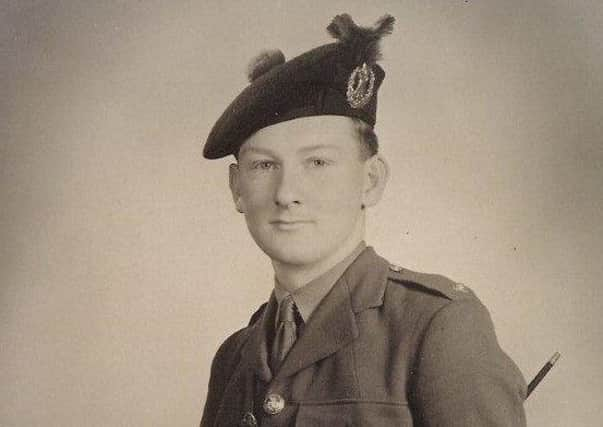Obituary: Hugh Ross Neilson, civil servant and Korean War veteran


Hugh Ross had fully intended to follow family tradition and pursue a career in publishing – until economics and National Service set him on a completely different path.
Born in Greater London, his grandfather, John Neilson, had helped to set up, and later owned, printing and publishing company Vinton & Son which specialised in agricultural books and records and volumes on country sports. Young Hugh’s father was also involved in the publishing business and, resolving to follow in their footsteps, the teenager decided his future lay in agriculture books.
Advertisement
Hide AdAdvertisement
Hide AdHis plan was to gain an agricultural degree and then join the business. But, while he was at university, economic realities forced his father to sell the family firm and the new graduate found himself securing a job at a leading government agricultural research station instead – subject to deferment from National Service. However, no deferment was granted and he was called up, joining as an infantry recruit at the Cameron Barracks in Inverness in 1952.
After passing officer selection, he was commissioned into the Queens Own Cameron Highlanders, the same regiment in which his father had served in the Great War, and that autumn he was given “a dream posting” to Austria. However, his army career was to take a very different turn within a few weeks.
More than two years earlier the Korean War had broken out when North Korea invaded South Korea. The country had been divided along the 38th Parallel after the Second World War. In the new conflict the United Nations, led by America, sided with the South against the Communist North, which was aided by China.
Although peace negotiations had begun in 1951, the fighting continued. A key strategic position, known as The Hook, was fiercely contested over many months. Located in the foothills outside Seoul it was the scene of several battles and the Black Watch had been deployed on the front line there, heroically holding the ridge while outnumbered, but suffering 10 per cent losses in their battle of November 1952.
Neilson and another young officer were sent out from the Queens Own Cameron Highlanders as reinforcements for the Black Watch in January 1953. He was a second lieutenant in charge of an Assault Pioneer Platoon, manning and rebuilding the trenches which came under constant bombardment by the Chinese. The Korean winter was atrocious, with temperatures falling to -30C, and the Allies also had to contend with propaganda blaring out at them – even Jimmy Shand’s music was utilised in an attempt to demoralise and induce homesickness in the troops.
The next and final Battle of Hook was a turning point in the war and took place in May. The Chinese army was repelled by troops of the Duke of Wellington’s regiment and the Black Watch and in July an armistice was signed.
At the end of the six months, the Black Watch battalion believed it was going home – but then the War Office sent them to Kenya to help deal with the Mau Mau insurrection. The battalion spent much of the next five months tracking down Mau Mau determined to rid the country of British rule.
After demob, Hugh was jobless for six months until being offered a job as assistant secretary of the Aberdeen Angus Society in Aberdeen. He soon became secretary and stayed for nine years – a period of rapid expansion for the breed which saw a strong export trade in bulls to America and Argentina and an auction record price for the breed in the UK of £63,000.
Advertisement
Hide AdAdvertisement
Hide AdHe was instrumental in the launch of a pioneering bull performance testing programme which confirmed the high heritability of growth rate in Aberdeen Angus bulls. He later devised a blueprint for a national beef recording scheme and today beef bulls of all breeds are sold with records to show the likely performance of their offspring.
Then in 1963 he helped to set up the Shrewsbury-based Select Livestock Marketing organisation, a short-lived venture which he followed with a long and distinguished career in the civil service. He joined the Ministry of Agriculture, where he became an assistant secretary, undertook a variety of policy jobs and spent much time in Brussels.
He was also seconded back to Scotland on two occasions – in 1969 to set up the Meat & Livestock Commission’s Scottish headquarters in Perth and later in 1975 for a three-year spell as finance officer of the Intervention Board which operated the Common Agricultural Policy in the UK.
He worked in the Fisheries Department for seven years, looking after fresh water fisheries, fish farming and salmon, plus all dumping at sea, including nuclear waste. He became chairman of the Oslo Commission and of the Joint Meeting of the Oslo and Paris Commissions on the regulation of dumping at sea, whose work was the forerunner to the current legislation on decommissioning of North Sea oil and gas installations.
On retirement he was selected to become a clerk and adviser to the select committee on European legislation in the House of Commons. He spent almost five years in the post and continued to be a supporter of the European Union.
A life-long member of the Aberdeen Angus Cattle Society, he was a member of the Farmers Club, Crieff Probus Club and a keen gardener. He had also been an elder of the Church of Scotland for almost six decades and for many years was the session clerk of St Columba’s Church in London’s Pont Street.
He is survived by his wife Irene, with whom he would have celebrated their diamond wedding this summer, their son Ewan, daughter Angela and six grandchildren.